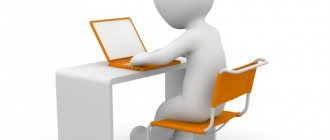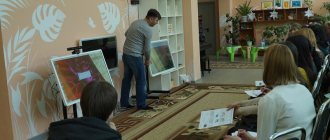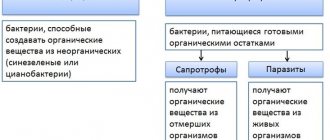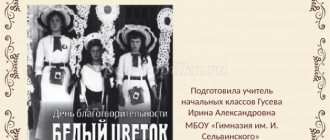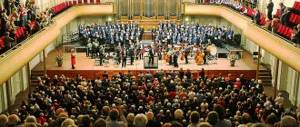Article on the topic: “Using music in fine arts lessons”
Using music in art lessons.
Since ancient times, music has been present in human life. The baby calms down and falls asleep to the mother's lullaby. Schoolchildren, in their free moments of rest, rush to hear their favorite musical compositions. A pleasant melody helps you relax after tiring work. The diverse world of sounds has always attracted people with its expressiveness and beauty.
The influence of music is determined by the psycho-emotional state of a person. It was noticed and widely used in ancient times. Pythagoras introduced the concept of “musical medicine” and treated mental and physical illnesses with the help of musical compositions he composed. In the morning he sang to increase activity, in the evening to calm his nerves.
Research by scientists has shown the positive effect of music lessons on the development of memory and mental abilities of children. And church music or bell ringing reduces the activity of microbes in the human body. It is known that in the Middle Ages, in order to get rid of the plague, they continually rang the bell.
Listening to joyful music can evoke positive emotions. In the morning, it is better to listen to cheerful, cheerful music. Energetic music influences the human psyche and helps change sadness to joy, despondency to optimism. Calm and smooth music allows you to relax and calm down. V. Bekhterev believed that “music is a healer of health.” Some composers specifically composed healing music. For example, Bach's Heldberg Variations were written for Count Kaiserling as a remedy for insomnia.
In art classes, the use of music, especially classical music, can be very effective. It is believed that Mozart's music promotes the rapid assimilation of information and affects mental performance. The lyrical melodies of Tchaikovsky, Chopin's mazurkas, Liszt's rhapsodies help to cope with difficulties and find peace of mind. Vivaldi's works improve memory. Folk music has a positive, calming effect on a person. P.I. used motifs of folk songs in his work. Tchaikovsky, M.A. Balakirev, N.A. Rimsky-Korsakov and other famous composers. V. Sukhomlinsky wrote that “music is a powerful source of thought. Without musical education, mental development is impossible.”
“Music promotes the flight of imagination and makes a person happy,” Plato argued. In fine arts lessons, students constantly have to resort to their imagination, which in children is not varied enough. Therefore, musical works help expand students’ understanding of the surrounding space. After all, with the help of music, composers created a wonderful world full of beauty.
The best works of musical art can be used when teaching in accordance with the content, for example, depicting a landscape. Seasons, natural phenomena, animal behavior - everything finds its sound expression, often striking us, the listeners, with the power of its impact. “Variations of the Winter Fairy” (from the ballet “Cinderella”) by S. Prokofiev, “Wind on the Plain”, “Steps on the Snow” by C. Debussy, “Walk” by M. Mussorgsky enrich the performances and imagination of children.
The orchestral introduction to N. Rimsky-Korsakov’s opera “The Snow Maiden” also introduces the listener to the kingdom of nature. The music enchants with the sounds of the forest and mysterious rustles. With great artistic skill, the composer reproduced the voices of birds. Through the music, children were able to hear the cry of a cuckoo, the knocking of a woodpecker, and the clicking and whistling of other birds.
The pride of Russian classics is the romances and songs of M. Glinka. Some of them depict pictures of Russian nature. In the soulful song “Lark”, the piano part expressively recreates the flat Russian landscape - its endless distances, meadows with stems of grass and cereals creeping in the wind. Before the singer enters, the trills of a lark are heard, accompanied by the song.
For a lesson in drawing a winter landscape, you can use a fragment of S. Prokofiev’s suite “Winter Fire”. The picture of a winter forest finds a poetic embodiment in music. The lightness and transparency of the sound are reminiscent of an artist’s watercolor landscape. There is peace and quiet in music. The whiteness of the snow, the purity and freshness of the air become tangible. In one of the parts of the suite (“Waltz on Ice”), expressive chanting melodies well convey smooth movements gliding across the ice. The graceful dance is full of captivating young enthusiasm.
The musical works of P. Tchaikovsky delight us with their variety of colors, inexhaustible imagination and exquisite craftsmanship. In the symphony “Winter Dreams”, soft muted colors depict the favorite pictures of Russian winter nature in Russian poetry, as if emerging through a light snowy haze. The musical landscape of P. Tchaikovsky's works is consonant with the landscape paintings of I. Levitan and V. Serov. An inexhaustible source of inspiration is the collection “Seasons”, which consists of twelve plays - according to the number of months in the year. Each of them depicts a characteristic image or scene from Russian life. And when listening to the march from the ballet “The Nutcracker,” the students were able to better imagine the New Year’s holiday with its cheerful bustle and noisy fun.
Like painting, music helps us see and understand a rich and diverse world. She can paint pictures of nature, convey the noise of a big city or the cheerful chaos of a holiday. Let us remember the wonderful words of composer D.B. Kabalevsky: “Music not only decorates our life, makes it more elegant, more fun, more festive, there is music that makes it more meaningful, richer and better... Love music, and it will bring you so much joy!”
“The use of modern technologies within the framework of the Federal State Educational Standard for Education in music lessons”
Prepared by: music teacher
MBOU Lyceum No. 3, Mineralnye Vody
Isaeva Galina Petrovna
Music lovers and connoisseurs are not born, but become...
Education is an industry aimed at the future (S.P. Kapitsa).
In connection with the introduction of the federal state educational standard for general education of a new generation, new approaches to teaching the subject “Music” are needed. For better assimilation by students of the main educational program, personal, subject and meta-subject requirements for the student are presented. To achieve high results in education, the program has developed universal learning activities. Work in the lesson should be conducted in such a way that the student does not accept knowledge in a ready-made form, but makes an effort to find something new, and is able to reflect and discuss. For this purpose, the new generation standards have created several types of universal actions; personal, cognitive, regulatory. In order to form educational universal actions among schoolchildren, it is necessary to teach them to demonstrate their knowledge and skills in various types of artistic and creative activities, to master the techniques of analysis, comparison and generalization of musical works.
A music lesson, as a process of learning art, plays a special role, since creativity is its core and influences the development of the corresponding abilities of students. Musical classes provide an opportunity to most fully reveal the basic psychological qualities of students (thinking, imagination, memory, intellectual flexibility, etc.), to cultivate the emotional and sensory sphere of the psyche (subtlety, sensitivity, the ability to understand the depth of emotional experiences through the art of music).
In this presentation I will focus on some of the pedagogical technologies I most often use in music lessons and in extracurricular activities.
In teaching music, in connection with the implementation of the Federal State Educational Standard, I use the following technologies:
1. Technology for the development of associative - figurative thinking of schoolchildren (implies the interaction of music with the art of painting, literature, theater, cinema, etc.)
2. Health-saving technology (Listening to music, singing songs, participating in a variety of creative activities relieves nervous overload, has a positive effect on the emotional state of students). The use of these technologies makes it possible to distribute various types of tasks evenly during the lesson, alternate mental activity with physical exercises, determine the time of presentation of complex educational material, and allocate time for independent work, which gives positive results in learning.
During singing and intoning musical works in music lessons, the vocal apparatus is healed and breathing develops.
Listening to the best examples of musical art, playing musical instruments, practicing musical, theatrical and vocal art have a significant psychotherapeutic effect on children, relieving neuropsychic stress caused by other lessons, and contribute to overall health.
Alternating different types of activities (singing, playing musical instruments, moving to music) during the lesson also helps relieve fatigue.
Changing the location of workplaces is one way to create a comfortable learning environment.
3. Gaming technology (schoolchildren get little tired while playing, and secondly, their brain and intellect are actively working) As you know, playing, along with work and study, is one of the main types of human activity. The phenomenon of the game is that, being entertainment and relaxation, it can develop into learning, creativity, therapy, and a model of human relationships. The motivation of gaming activity is ensured by its voluntariness, opportunities for choice and elements of competition, satisfying the need for self-affirmation and self-realization.
Game activities in the lesson perform the following functions:
entertaining
(this is the main function of the game - to provide pleasure, to arouse interest);
communicative;
self-realization in the game;
play therapy
(overcoming various difficulties that arise in other types of life activities);
diagnostic
(identification of deviations from normative behavior, self-knowledge during the game);
correction function
(introducing positive changes to the structure of personal indicators);
interethnic communication
(assimilation of socio-cultural values common to all people);
socialization
(inclusion in the system of public relations).
4.Group technologies
In group work, the class is divided into groups to jointly solve certain educational problems.
An example of group work that I used in the final lessons of the 1st trimester in grades 5-7 in the current school year:
At the beginning of the work, each group is given a piece of whatman paper (or album sheet), cuttings (“noodles”) with the names of composers and their works, which the students became acquainted with in the 1st trimester, a glue stick, and a felt-tip pen.
Each group is given the task: glue the names of composers onto a piece of Whatman paper, and opposite each name - the name of the musical work of this composer (5-7 pairs are obtained). Students discuss the problem and outline ways to solve it. Next, they implement the task in practice. (6-9 minutes).
From the site administrator: if you want to read the full text of the presented publication, you can download it from the site in full.
article “Modern music lesson in a secondary school”
Modern music lesson in a secondary school.
Petrova Anna Egorovna - music teacher at MBOU "PSOSH No. 3-OTs with UIOP"
Time goes by quickly. One generation quietly replaces another. This is the 21st century - the “age of speed”, “age of integration”, “age of information”, the age of new technologies, gadgets, the Internet and new progressive youth. The age of new modern people, whose lives are always on the move. A person of the 21st century is a person of information who tries to comprehend all spheres of life, strives for freedom, through art reshapes reality, goes beyond boundaries, changes life and achieves harmony and freedom.
The main requirement for a modern person who lives in a world of global changes and integration processes, extremely rapid development of technology and information resources, is the ability to create. Therefore, one of the tasks of modern education is to create conditions for the formation of a competent, creative personality. An important place in the process of formation of education belongs to the artistic and aesthetic cycle, which influences the development of the emotionally sensitive sphere of the student. Art is a kind of tuning fork of civilization, a universal way of thinking, capable of synthesizing truth, goodness and beauty, and shaping a creative person. Artistic and aesthetic education is an intermediary between socially significant cultural values and personal values of a person and ensures the formation of basic competencies (general cultural, artistic-cognitive, artistic-communicative, etc.), forms the desire and ability for artistic and creative self-realization of spiritual self-improvement throughout life . An important role in all this activity is played by the emotionally sensitive sphere and the creative activity of the individual, the development of which is directly related to art activities.
The main goal of modern music education is: “the establishment of musical culture as an integral part of spiritual culture” (Standard of Basic General Education).
The current tasks of modern school music education are:
- development of consciousness, musical thinking of children;
- development of the emotional sphere of students;
- development of the strong-willed, active side of the personality associated with the development of various types of activities.
Current problems of modern music education are:
- using an integrated approach to teaching based on the interaction of various types of art;
- introduction of new educational technologies;
- use of innovative forms of work;
- use of modern methods of music education;
- using the principles of artistic didactics.
A music lesson is, first of all, a lesson in creativity, and should not just be the fact that a child encounters music; its result should be changes in the child himself. Modern school music lesson: what lesson has the right to be called modern? In the generally accepted understanding, a modern music lesson is a lesson in tune with the times, in which the priority tasks of the educational sphere and the specifics of music perception are harmoniously combined. Today, the tasks of school education are centered around the child, the revelation of his individuality and uniqueness, the ability to find himself in society, to be a transformer of himself and the surrounding reality.
The teacher's goal in a modern school music lesson is focused on the changes occurring in students. This means that the learning process should not be aimed at transferring ready-made experience of musical activity, but at mastering ways to be involved in this experience, to master, transform and replenish it. The changes occurring in a child are manifested in all components of his musical culture: his musical experience, musical literacy, musical creativity. The formation of each component of a child’s musical culture is the subject of the pedagogical activity of a music teacher. The high-quality implementation of the state standard of general education is facilitated by the introduction of new educational technologies.
The concept of “educational technology” can be considered in three aspects:
- scientific - as a part of pedagogical science, studying and developing the goals, content and methods of teaching and designing pedagogical processes;
- procedural - as a description (algorithm) of the process, a set of goals, content, methods and means of achieving the planned learning outcomes;
- activity - the implementation of the technological (pedagogical) process, the functioning of all personal, instrumental and methodological pedagogical means.
The introduction of new educational technologies is aimed at improving the educational process and developing the artistic and practical competence of students.
The most indicative is the use of innovative technologies: technology of developmental education - problem-based presentation of educational material, partial search activity, independent project research activity.
The implementation of the project method and the research method in practice leads to a change in the teacher’s position. From a carrier of ready-made knowledge, he turns into an organizer of cognitive, research activities of his students. The psychological climate in the classroom is changing, as the teacher has to reorient his work and the work of students to various types of independent activities of students, to the priority of activities of a search, research, and creative nature.
The structure of a child’s musical activity contains the following elements: goal - means - process - result. This condition is a guideline for the teacher, allowing him to organize productive musical activities of schoolchildren. Productivity in this case appears not only as the result of a creative act, represented in the creation of something new and original, but, first of all, as the quality of students’ activity.
At all times, people tried to use music as a powerful psychological force to influence the feelings and will of people. This energetic potential of music is also successfully used by modern show business, which, with the help of often low-quality musical products, has formed not only “tastes”, but also a persistent reluctance of young people to generally notice the greatest wealth of high art. In this situation, the problem of organizing musical training and education in secondary schools becomes particularly relevant, which can constitute an alternative to the mass expansion of the sub-culture.
A lesson is often an inconspicuously intense work that requires enormous effort from the teacher, maximum concentration, flexible thinking and instant reaction in all sorts of psychological situations. Music lessons have a particularly emotional atmosphere, and this is quite normal, because... music is the language of feelings. It moves and excites the feelings of schoolchildren, creating certain moods, ultimately influencing the behavior and relationships of students.
A music lesson aims the teacher at nurturing musical culture in schoolchildren as part of their general spiritual culture. With this setting of the goal of musical education, it is especially important to master the art of your profession. “There is art and there is creativity,” said V. Nemirovich-Danchenko. This opposition is not accidental. It naturally arises when we are talking not about external, but about deep creative processes in art. Thus, a creative music lesson becomes a comparison to another lesson in which craft reigns, even the most skillful one. In this regard, the problem of “external” and “internal” in the art of conducting a music lesson arises. It’s one thing if the lesson is just the introduction of some new auditory additions to the musical impressions of schoolchildren. It’s another matter if this is a special, unique encounter with art. The problem of “external” and “internal” in music lessons is, in fact, the real relationship between music as an art and the art of conducting a music lesson. While studying music in such lessons, children should feel that they are studying life, that music is life itself.
Integrated lesson (art, music) “Music is the sister of painting”
Lesson summary.
Organizational information
Lesson Authors
: Dmitryakova Elena Pavlovna (fine arts teacher, Moscow Art Theater),
Blinova Elena Vladimirovna (music teacher).
Item
: visual arts, music.
Class
: 7th grade, group training (5-6 people)
It is recommended to conduct a lesson on the Federal State Educational Standard.
Lesson duration: 45 minutes.
Lesson topic
:
“Music is the sister of painting”
Lesson type
: integrated, visual arts with music. Learning new material.
Form:
Combined
Purpose of the lesson: To expand students’ knowledge by the interaction of two types of art: music and painting; analyze and identify the internal diversity of connections between music and fine arts, correlate the means of artistic expression of music and painting.
Objectives: Educational: —
to cultivate a sensitive mutual understanding of the works of great artists and composers;
- develops aesthetic feelings, artistic taste, interest in the study of music, literature, and art. Educational: -
develop the ability to analyze a piece of music, use musical and artistic terminology;
— acquaintance with the work of the musician and artist M.K. Čiurlionis, strengthening drawing from the imagination, creating creative works. Developmental: -
expand your horizons, develop associative thinking, color perception of music and painting, the ability to associate music with color on paper; — development of spatial thinking and creative imagination.
Equipment:
1. Video projector 2. Presentation on the topic “Music is the sister of painting” 3. Musical material: musical compositions by M. K. Ciurlionis. 4.Material for creative work.
Artistic design of the lesson: videos “Ciurlionis - music of painting”, “
M.K.Ciurlionis: “Zodiac Signs”, “Kings”. Fairy tale", "Fairy tale. The Princess's Journey, "Sonata of the Sun"; CDAnna Khromchenkova “The World I Need” (A. Ermolov - S. Zolotukhin); presentations: “M.K.Ciurlionis - artist, musician”, “Cluster”.
Art materials and tools: A3 format, brushes, gouache, sponge, marker caps, water jars.
Lesson plan:
1. Organizational moment
Students ring the bell and enter the office to the song “I Draw This World.” They are seated in groups, dividing into 4 groups, according to the colors of the stickers (sea-blue, earth-green, fire-red, sun-yellow).
2.Greeting
Music teacher:
— We are glad to see you at the open integrated lesson of music and fine arts.
-We wish you to plunge into the world of music and painting. —
AMO “Airplane of Wishes” - what do you expect from our lesson?
Art teacher:
— Today we will talk to you about drawing from imagination.
“What is needed to awaken your imagination?”
(Suggested student answers: be inquisitive, read fairy tales, love nature, be interested in literature, etc.)
Music teacher: -
They say that music is the best source of inspiration. It has everything - mood, emotions and boundless imagination, that is, everything that creativity needs.
-No wonder the famous Italian artist Leonardo da Vinci said: «
Music is the sister of painting."
Art teacher:
— Listening to music, images appear before your eyes, and the sounds of music can be transferred to colorful strokes and lines.
— Today we will get acquainted with the work of the unusual composer and artist Mikalyus Konstantinos Ciurlionis, who combined music with painting. Music teacher: -
M.K. Ciurlionis created many musical works.
Of these, “Sonata of the Sun”, “Sonata of the Sea”, “Sonata of Spring”. “Their music seems to flow over the listener, captivating with its movement and creating a special mood. And most importantly, his music writes beautifully and vividly, drawing fantastic images. Fine Arts teacher: -
If M. K. Ciurlionis was interested in music since childhood, then he began to study drawing late - from the age of 27.
“He loved his native nature, legends, fairy tales, songs. He studied history, philosophy, and astronomy. “But music had a huge influence on him as an artist, because he was a deeply educated and talented musician. (
Showing a video about the work of M.K. Čiurlionis
) Music teacher: -
Let's listen to the music with our eyes closed and try to see what is drawn in it (music plays for 3 minutes).
-What images did you see? What colors did you see? (Students' answers) Fine Arts teacher: -
And in his paintings, color is also the main thing, color has meaning.
The artist talks to his viewer with color. — What colors of paint did the artist like? (Student responses) -
Blue color - has strong energy, it is impossible to take your eyes off.
Yellow color is the light of God, radiance, eternity, goodness. Music teacher: -
We talked about colors and colors in music and paintings. Let's summarize our vision of Ciurlionis as a creative person. Creating a cluster (presentation-reminder about a cluster) A cluster (English cluster - cluster, brush, swarm) is a union of several homogeneous elements, which can be considered as an independent unit with certain properties. An example of a cluster and compiling a cluster on the topic of the lesson.
Reflection:
“Air - hands up, blow. Fire - playing with hands, depicting fire. Water - putting out the fire - image of waves. Earth - feel the earth with your feet"
Independent and practical work
.
AMO "Bus Stop". Using this method in an integrated art and music lesson. Organization of independent work on the topic “Music is the sister of painting” in 7th grade. Fine Arts teacher: -
Ciurlionis really sang his fantastic paintings, expressing some kind of cosmic symphonies with delicate colors, line patterns, and always with a bizarre and extraordinary composition. Čiurlionis, like Rimsky-Korsakov and Scriabin, had so-called color hearing. The goal of AMO “Bus Stop”: learn to discuss and analyze a given topic in small groups.
Art teacher: —
I invite you guys to plunge into the world of Ciurlionis.
Depict his favorite elements (Sun, Sea, Fire, Earth ) using
unconventional painting methods.
Demonstration of a presentation on non-traditional methods (crumpled paper, prints - marker caps, wide brushes, sponge). Carrying out: I determine the number of non-traditional painting methods (optimally 4-5). Participants are divided into groups (5-7 people in each). A group is a bus stop where students will be present for a limited time. At each stop (on the wall or on the table) there is a large-format sheet with a question written on it on the topic (the elements of the Sun, Sea, Fire, Earth). I set a task for the groups to discuss the main non-traditional methods in painting. After discussion, students are provided with the necessary materials to create a picture using unconventional painting methods: Group 1 - depicts the element of Earth with crumpled paper, Group 2 - with a sponge, the element of the Sun, Group 3 - with caps from felt-tip pens, the element of Sea, Group 4 - with wide, hard brushes, the element of Fire. Then, at my command, the groups move clockwise to the next bus stop. (3 minutes) Get acquainted with the painting compositions that have already been started and add their thoughts on a given topic using unconventional painting methods. (3 minutes) You cannot correct the painting compositions written by the previous group. Then the next transition is to a new bus stop - getting to know each other, discussing and adding your thoughts. (3 minutes) When the group returns to its original stop, within 3 minutes it gets acquainted with its new modified pictorial composition, determines the group member who will present the work. After this, each group presents the results of their work. At the end, I summarize what was said by all groups and make adjustments if necessary.
The result of the work
– combining four works into a single pictorial composition.
Music teacher
: — Guys, let’s sing together the song “The World I Need” (A. Ermolov - S. Zolotukhin)
Fine Arts Teacher: —
Our lesson is ending, let’s finish the proposed phrase:
Today in class I…..
Fine Arts Teacher: —
Did your expectations come true?
(children's answers) Music teacher: -
I want to finish our lesson with the words of M.K. Čiurlionis “I will fly to distant worlds, to the land of eternal beauty, sun and fantasy, to an enchanted land.”
Art teacher:-
Thank you for the lesson!
